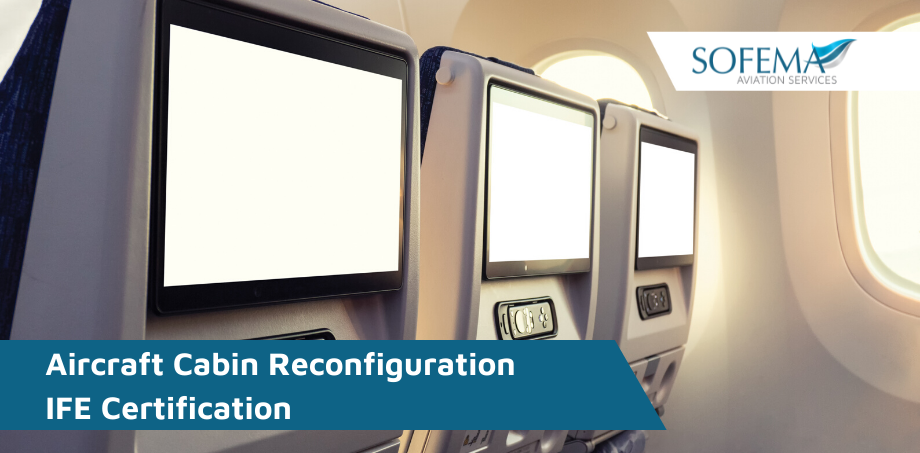Sofema Aviation Services (SAS) www.sassofia.com reviews a number of key issues related to the installation & certification of IFE systems.
Introduction
From the passenger perspective, In-Flight Entertainment (IFE) is essentially for other than low cost, short-haul travel.
Typically delivered to seat-back screens as well as personal electronic devices (PEDs) via wireless access points.
An IFE System can be expected to provide a range of services including:
- Video
- Audio
- Moving Map
- Games
- Shopping
- News
- Messaging
Operators are welcoming the option of full wi-fi connectivity via wireless servers and access points, by employing integrated systems. By employing IEEE 802.11 specification Integrated cabin wireless access points, or ‘CWAPs,’ the system can support HD – Quality Video Streaming.
Installation
The IFE system’s installation is usually considered on three different levels – the system level, the equipment level, and the software level.
The most common implementation mistake is the underestimation of schedules. This often occurs due to either underestimation or an unrealistic schedule due to lack of experience.
Product sourcing can incur long lead times, also to note the difference between Buyer Furnished Equipment (BFE) and Supplier/Seller Furnished Equipment (SFE) programs.
Sourcing IFE is an extensive process requiring the allocation of resources and manpower to complete thoroughly and properly to ensure you are selecting the right products and partners for your project.
A typical Aircraft IFE System comprises:
- Aircraft IFE Management System and Content Server
- Crew Control Panel
- Seat User Panels
- Data and power cabling
- Wireless access points (For PEDs)
- Ground Support / Maintenance Access
- Content Loading
- Data Analysis (Statistics)
- Online Shopping Interface
Additionally, open hardware platforms enable a potential future upgrade capability. Options include:
- Non-connected installation
- Air-to-ground solution
- Air-to-satellite solution
Testing
IFE system testing typically follows best practices employed when testing other systems and components of an aircraft.
Applicable Standards and requirements
Radio Technical Commission for Aeronautics (RTCA).
- Environmental testing of:
o Avionics hardware (DO160)
o Software (DO178)
o Design assurance (DO254)
o Data processing (DO200)
o Information security (DO355)
- Test plan is developed for each IFE system including the following:
o Structure and Team Responsibilities
o Test environment:
• Unit Tests – Considers both the hardware and software usually performed by the developer, coder, and hardware manufacturer.
• Integration tests combine system software and hardware elements.
• Qualification tests to demonstrate compliance with the system’s software and hardware requirements.
• Acceptance test approved by the customer to validate contractual requirements.
o Test Methodology:
• Functionality
• Performance
• Robustness
• Cyber Security
o Test Data Recording
Commercial IFE faces challenges related to:
- A lag related to technological developments.
- Certification approval, industry compliance, and testing are costly and time-consuming processes.
o STC Approval
o Flight Testing
- Fleet Program Installation can take over 2 years.
Next Steps
Follow this link to our Library to find & Download related documents for Free.
Sofema Aviation Services www.sassofia.com offers the following regulatory training: EASA CS 25 Compliant Cabin Certification & Mods Training Program – 5 Days
Please see the website or email team@sassofia.com for additional information.
Tags:
Aircraft Cabin, Aircraft IFE Management System, aviation, CS 25, EASA, EASA compliant, IEEE 802.11, IFE, IFE Certification, IFE Management System, IFE systems, In-Flight Entertainment (IFE), Radio Technical Commission for Aeronautics (RTCA), SAS blogs, Supplemental Type Certificates (STC)




